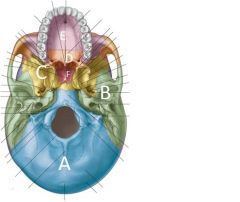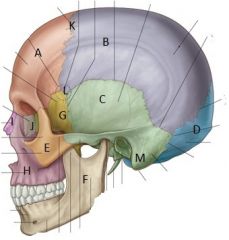![]()
![]()
![]()
Use LEFT and RIGHT arrow keys to navigate between flashcards;
Use UP and DOWN arrow keys to flip the card;
H to show hint;
A reads text to speech;
27 Cards in this Set
- Front
- Back
|
what OMT techniques can be used for the cranium?
|
counterstrain, lymphatic drainage techniques for ENT conditions, soft tissue inhibition techniques, and osteopathy in the cranial field model
|
|
|
who was the first to study and elucidate the principles of OCF?
|
william G sutherland DO, DSc
|
|
|
what are the five components of the primary respiratory mechanism?
|
1) inherent motility of the brain and spinal cord
2) fluctuation of the cerebrospinal fluid 3) mobility of intracranial and intraspinal membranes 4) articular mobility of the cranial bones 5) involuntary mobility of the sacrum between the Ilia |
|
|
what is the inherent motility of the brain and spinal cord?
|
-subtle, slow wavelike movement
-shortens and thickens (coils) and lengths and thins (uncoils) |
|
|
what may the motility of the brain and spinal cord be a continuation of?
|
embryologic development
|
|
|
what is the fluctuation of cerebrospinal fluid like? how can this be observed?
|
wavelike motion of fluid observed by palpation or percussion
|
|
|
based on the primary respiratory mechanism, what happens as the CNS shortens and lengthens? what affect does this have on the rest of the body?
|
ventricles change shape and CSF fluctuates; hydrodynamic change throughout the body
|
|
|
what cavity do the meninges exit out of? what do they firmly attach to?
|
out of: foramen magnum
attached: at least C2, C3 and S2 |
|
|
what is the core link?
|
the dural connection of the meninges to the sacrum
|
|
|
the sacrum moves in response to what three things?
|
1) the inherent motility of the CNS
2) fluctuation of the CSF 3) the pull of the dural membranes |
|
|
where does the involuntary motion of the sacrum between the Ilia occur?
|
superior transverse axis at S2 - respiratory acis
|
|
|
what happens to midline bones during inhalation and exhalation?
|
they flex and extend
|
|
|
what happens to paired bones during inhalation and exhalation?
|
they internally and externally rotate
|
|
|
when does the CNS shorten? lengthen?
|
shorten- inhalation
lengthen- exhalation |
|
|
what is the cranial rhythmic impulse believer to synchronous with?
|
the primary respiratory mechanism
|
|
|
what are the factors that increase the cranial rhythmic impulse? decrease?
|
I: vigorous exercise, fever, OMT
D: stress, chronic fatigue, chronic infections, depression, chronic poisoning |
|
|
the sphenobasilar junction exhibits biomechanical motion similar to what?
|
a modified vertebral joint
|
|
|
what are the unphysiologic strains?
|
lateral (left and right), vertical (inferior and superior) and compression
|
|
|
what does TART stand for in the cranium?
|
T- soft tissue changes, heat, muscle tightness, intraosseus changes
A- landmarks including sutures R- restriction in joints and membrane T- counterstrain tender points for TMJ |
|
|
what are the goals of tx?
|
- normalize structure to optomize function
- increasing circulation by normalizing arterial, venous, and lymphatic channels - normalizing CSF fluctuation - correcting or resolving cranial articular strains - releasing membranous tension - counteracting stress- producing factors by normalizing function of the cerebrum, thalamus, hypothalamus and pituitary body |
|
|
what are the indications for cranial tx?
|
Newborns and Children
Dental Problems Trauma Neuroendocrine immune dysfunction |
|
|
what are the contraindications for cranial tx?
|
Acute skull fracture
Acute cranial bleed Seizure disorder (relative) |
|
|
what are traube-hering-meyer oscillations?
|
waves that are not due to cardiac cycle or respiration and are mediated by the parasympathetic and sympathetic nervous systems... probably near or at nucleus solitarius
|
|
|
what are cranial rhythmic impulses concomitant with?
|
low frequency fluctuations in blood velocity.
|
|
|
what are the five areas of research that support the OCF model
|
recurrent otitis media
Parkinson's disease Sleep latency and sympathetic never activity OMT and mood altering effects Cranial manipulation and THM waves |
|

Name all of the lettered areas
|
A) occipital bone
B) Temporal bone C) Sphenoid bone D) Hard Palate (Palatine bone) E) Hard Palate (Maxilla) |
|

name all of the lettered areas
|
A) Frontal Bone
B) Parietal Bone C) Temporal Bone D) Occipital Bone E) Zygomatic bone F) ramus of the mandible G) Sphenoid bone H) Maxilla I) Nasal Bone J) Lacrimal bone K) Coronal Suture L) Pterion M) Mastoid part of temporal bone |

